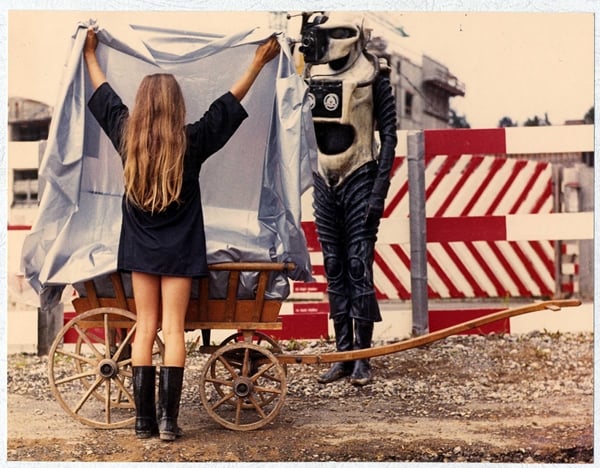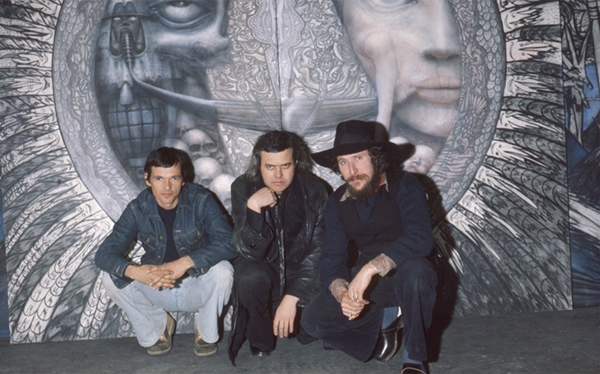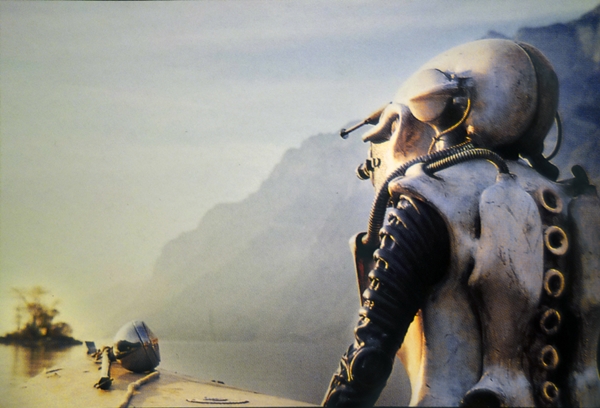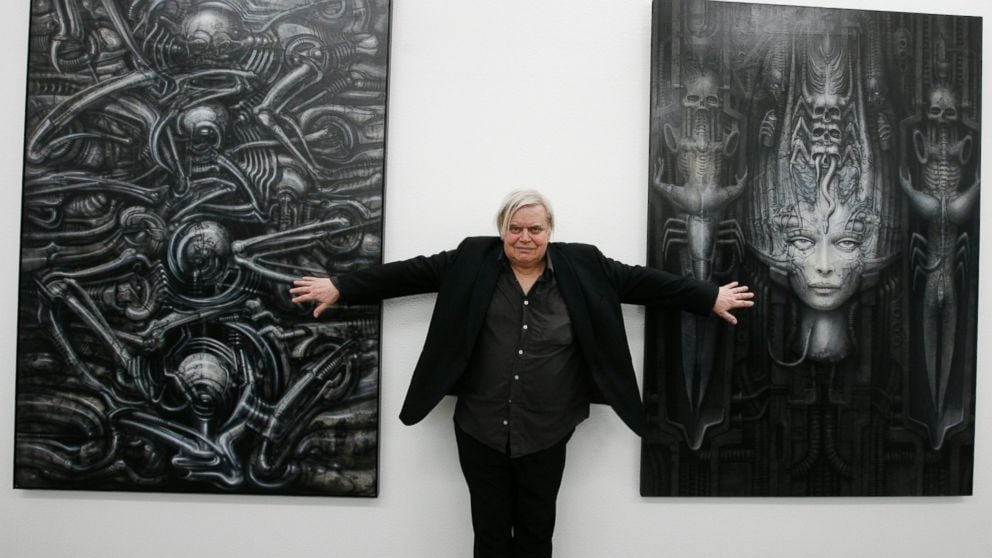Art & Exhibitions
HR Giger Retrospective Comes to the Museum of Arts and Design One Year After His Death
His impact will likely be more evident in the 21st century.

His impact will likely be more evident in the 21st century.

by
Christie Chu

Largely known for his Oscar-winning set design of Ridley Scott’s 1979 sci-fi flick Alien, the Swiss surrealist artist, who died this past year at the age of 74, also had a fruitful career as a niche artist and collaborator. To mark the year since Giger’s passing, New York-based filmmaker Zev Deans and Giger’s longtime agent, Leslie Barany, partnered with the Museum of Arts and Design in New York for a two-day film festival, “The Unseen Cinema of HR Giger,” which kicks off May 22.
His idiosyncratic life and personality reflects the cult following he has today, but Deans and Barany want to give his under-the-radar films and works the exposure they deserve. From screenings of Giger’s documentaries, like Tagtraum (1973), which captured Giger’s meeting with artists C. Sandoz and W. Wegmueller, to his 1968 dystopian sci-fi film, Swissmade 2069, festival-goers will get a peek into the mind and life of the enigmatic creator.
His early exhibitions of his work depicting sex and death were controversial. One New York Times obituary on the artist noted that “galleries had to wipe the spit of disgusted neighbors from their windows.” Tattoo artists were inspired by his art and the artist even said his work seemed to attract people “who are crazy.”
But recently, the artist has garnered some new found appreciation. His painting Passage XXV, an acrylic on plywood work estimated to sell for €25,000 ($28,610), sold for €120,000 (roughly $137,327) at Christie’s Zurich earlier this month. And a documentary filmed just before his death, Dark Star: HR Giger’s World, was released in the US on May 15.
The artist worked with rock princess Debbie Harry on her album Koo Koo, opened up two bars in his native Switzerland, and his artwork decorated the walls of legendary New York nightclub, Limelight. This screening will feature films highlighting those collaborations including A New Face of Debbie Harry (1982). At the moment, visitors to Gruyeres, Switzerland can stop by the HR Giger Museum, which houses the largest collection of the artist’s work in a medieval Chateau setting.
We spoke to the festival organizers on how this event celebrating the idiosyncratic artist is both timely and inevitable.

Claude Sandoz, HR Giger, Walter Wegmuller.
artnet News: How did this project come together?
Zev Deans: So Leslie, who was Giger’s agent for many years, did a film festival of Giger’s work in Krakow, Poland. I wanted to do a small screening of Giger’s work. We initially approached the MoMA [about the festival], but they were taking their time, and it didn’t seem like they were going to have it all ready or even do everything we wanted to do by May, for the one year anniversary of his death. So basically the Museum of Arts and Design happened because of a recommendation from a friend. I realized it was a good idea because they hosted a Jodorowsky exhibition in 2010 and they seem to take a lot more risks in general.
a: Why do you think his art work has largely remained out of the mainstream?
ZD: He has a populist appeal, he’s been shunned by the art world for the past 30-40 years. He was hanging out with Dalì and the surrealists of the 20th century. But the second he did Alien, and the second you become a part of pop culture reference, the art world turns away. There’s certainly more crossover now, but back at the time it certainly alienated him. He got pigeon-holed into the dark, tattooed, metal world that I work in, but I definitely see his work above and beyond the niche.
a: Is that why you wanted to do this festival in New York?
ZD: Yes, they [the films] dispel the notion that he was anything but a master of the 20th century. His work was so diverse, and so far ahead of his time. It’s like how Warhol had so much difficulty being accepted for such a long time. And I think it took until our generation for him to become a cultural icon. Giger might not have the same impact, but he will have more impact on the 21st century as more development happens with technology and biotechnology.

Screenshot of Swissmade 2069.
a: How is the festival broken down?
ZD: The museum’s director of public programs, Jake Yuzna, divided the festival into three segments—we kept the older stuff with the older stuff and the newer stuff with the newer stuff. The first part is of Giger’s collaborations. The second is more of Giger’s home life. And for the third, we show a behind-the-scenes of his career. It’s all his take of the situation, instead of some cheesy 20th Century Fox version. It’s a moody psychedelic film that he narrates and you watch him work through all the problems of making a movie happen. He’s got a sense of humor. He complains about all the ways he tried to make his creatures blatantly look like male and female genitalia and how he had to constantly battle 20th century fox about that.

Swiss artist H.R. Giger in front of his artwork (2007). Photo: Arno Balzarini, courtesy AP Photo.
a: What was it like to work so closely with Giger?
Leslie Barany: [H.R Giger] was having an exhibit in 1981 [after the Oscars]. I showed him around New York. How old was he? He was 40, I figured he could keep up with me. I didn’t see his show at the time. He’s very modest.
I asked him, was there anywhere else I would have seen your work? He responded, “I recently had 10-15 pages in Penthouse magazine.”
I had the chance to get to know the man. Our relationship was that. I would never call it a business relationship. I told him “another agent may have been better for you” but he liked that I felt the same way about merchandising.
Certainly in Switzerland, the art establishment is very snooty. For a long time they dismissed Alien, called it commercial sh–t. But Alien was extremely unique—the freedom he had. No film designer had that before or after him. No one knew how to build what he created.
He talked about everything; he was extremely well-read, interested in everything. He didn’t like it when people call his things “dark,” or being lumped together with dark artists. He thought his work was art nouveau, inspired by art nouveau. He was not a monster designer per se.
“The Unseen Cinema of HR Giger” will run from May 22 to May 23 at the Museum of Arts and Design.